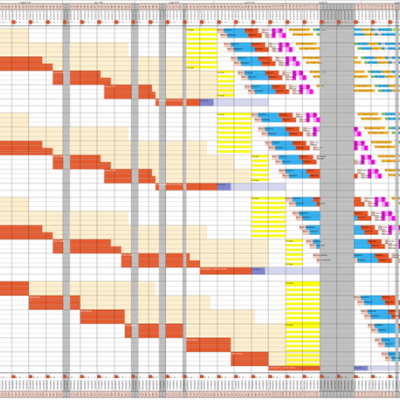We in design and construction tend to break down opportunities for improvement into three general categories - schedule, cost, and quality. I’m excepting safety here because it should always be the number one focus for improvement. Providing a safe work environment is the epitome of “respect for people”.
But back to those other three – schedule, cost and quality. People often assume that you can only pick two of these three because that thinking is ingrained in traditional delivery models. But the truth is that the buyers of our “products” don't want just two of those three. They want all three. They want their projects delivered on time, at a fair price, and with a high degree of quality. And why shouldn't they? If I was building a house for my family and me to live in, I certainly wouldn’t want to limit the improvements to just two of these three categories. And our clients are the same way.
It's been proven now that when we use collaborative project delivery methods it isn’t necessary to sacrifice one area of improvement to benefit the other two. I have been a part of several projects where the team maximized all three categories and some of those projects were quite complex. These projects were delivered ahead of schedule, with high quality, and at a cost that was below budget. This wasn’t easy - it took a lot of collaboration and more than a little courage.
Shigeo Shingo considered four categories for improvement, including one centered on effort. Shingo said:
There are four purposes of improvement: easier, better, faster, and cheaper. These four goals appear in the order of priority.
Note that he didn't say you couldn't improve all four, he just said to focus on them in order of priority.
It makes sense to me to focus on "easier" first. Why? Think about it. If things are easier they tend to be of higher quality (less complexity generally equals higher quality), they tend to go faster (fewer steps equals faster delivery), and they tend to be cheaper (fewer steps take less time, which equals less cost). This is the concept that my friend Paul Aker's "2 Second Lean" approach addresses. Make things easier, and the other three categories of improvements tend to fall into place.
It's also significant that "cheaper" is last on the list. When we focus on cost first, we tend to ignore overall value, including things like quality and life cycle costs. And sometimes doing things "cheaper" actually takes longer! I think of the design process when I think about how cheaper can take longer. An incomplete set of drawings is certainly cheaper to create for example, but it will take a lot of time to fill in the missing information somewhere down the road.
Think about what it would be like to deliver improvements on all four of Shingo’s “purposes for improvement” (in order of priority!) on your current projects. How would that affect your client’s opinion of your team? How would it influence the likelihood of getting their next project? How would you benefit personally if you worked in an environment where “easier” was the top improvement priority?
Let me know your thoughts…
Stay lean my friends!

